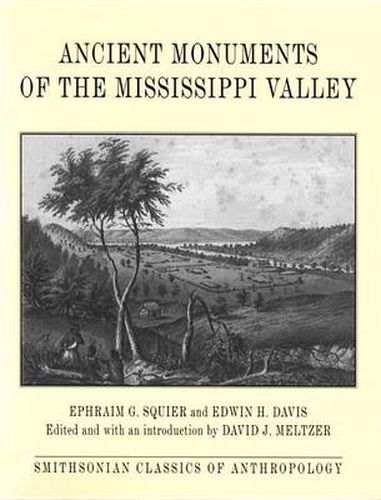Readings Newsletter
Become a Readings Member to make your shopping experience even easier.
Sign in or sign up for free!
You’re not far away from qualifying for FREE standard shipping within Australia
You’ve qualified for FREE standard shipping within Australia
The cart is loading…






Early in the 19th century, as wagon trains streamed into the lowlands of the Ohio and Mississippi valleys, settlers came upon vast numbers of abandoned mounds and earth–works that they attributed to a sophisticated race of moundbuilders who long ago had disappeared. Giving rise to often loaded questions about human origins, the mounds and the artifacts they contained became the focus of early American efforts toward a science of archaeology. Published in 1848 as the first major work in nascent discipline as well as the first publication of the newly established Smithsonian Institution, this volume remains today not only a key document in the history of American archaeology but also the primary source of information on hundreds of mounds and earthworks in the eastern United States, most of which have now vanished. while adhering to the popular assumption that the moundbuilders could not have been the ancestors of the supposedly savage native American groups still living in the region, the authors set high standards for their time. Their work provides insight into some of the conceptual, methodological, and substantive issues that archaeologists still confront. Long out of print, this t anniversary edition includes an introduction that describes the controversies surrounding the book’s initial publication, from a bitter, decades-long feud between Squier and Davis to widespread debates about the links between race, religion, and human origins.
$9.00 standard shipping within Australia
FREE standard shipping within Australia for orders over $100.00
Express & International shipping calculated at checkout
Early in the 19th century, as wagon trains streamed into the lowlands of the Ohio and Mississippi valleys, settlers came upon vast numbers of abandoned mounds and earth–works that they attributed to a sophisticated race of moundbuilders who long ago had disappeared. Giving rise to often loaded questions about human origins, the mounds and the artifacts they contained became the focus of early American efforts toward a science of archaeology. Published in 1848 as the first major work in nascent discipline as well as the first publication of the newly established Smithsonian Institution, this volume remains today not only a key document in the history of American archaeology but also the primary source of information on hundreds of mounds and earthworks in the eastern United States, most of which have now vanished. while adhering to the popular assumption that the moundbuilders could not have been the ancestors of the supposedly savage native American groups still living in the region, the authors set high standards for their time. Their work provides insight into some of the conceptual, methodological, and substantive issues that archaeologists still confront. Long out of print, this t anniversary edition includes an introduction that describes the controversies surrounding the book’s initial publication, from a bitter, decades-long feud between Squier and Davis to widespread debates about the links between race, religion, and human origins.